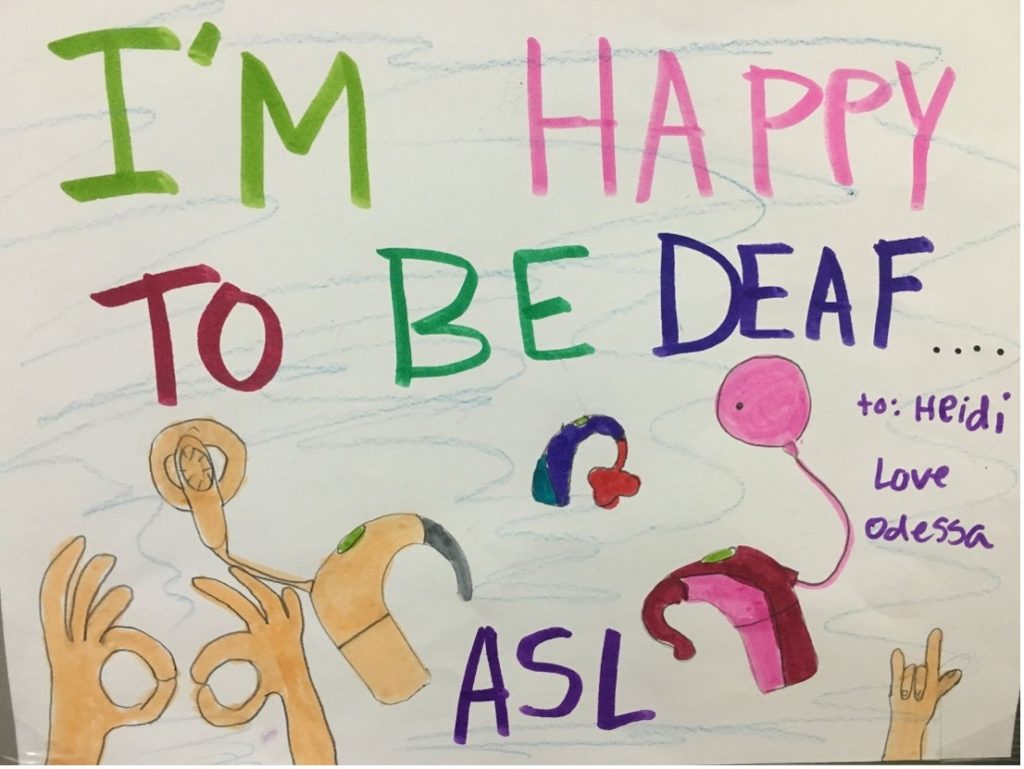As you start to think about the next school year, who better to turn to for tips than a teacher with a cochlear implant, who works with deaf children?
“Because of my experiences navigating the public school system as a deaf student with a cochlear implant, I can personally relate to many of the challenges and/or barriers that my students face. And it’s not always easy,” explains Heidi, who teaches primary school children with varying degrees of hearing loss in the US.
“The one advantage that many of my students have today is that they have tools. In addition to their hearing devices, they are also learning how to advocate for their hearing and communication needs. My students are light years ahead of me when I was their age!”
Finding the right resources
Heidi is all about equipping children with a “tool belt” of skills and devices to live with hearing loss. And it comes from personal experience.
While receiving a cochlear implant at age 12 was a turning point for Heidi to be able to hear and perform better in school, she says it “wasn’t enough.”
“I was still missing information and not fully understanding what was going on around me. This was evident when playing sports, socialising with groups of friends, or even preparing for tests. At the time, I didn’t understand why things were so hard.”
The next turning point came in college when she took a sign language class and was offered the resource of a sign language interpreter.
“This is when my world opened up. I met others who were deaf like me. I no longer felt different and alone. In college, I found that I could use my cochlear implant to help understand the professor, and a sign language interpreter to access missed information and to help follow class discussions.
“I learned that it doesn’t have to be either-or. I am most successful when using both my cochlear implant and sign language. I find the same to be true for many of my students too.”

Why children need a tool belt to live with hearing loss
“In my experience, in the general education classroom most deaf and hard of hearing children need multiple ways of accessing information,” explains Heidi.
“Their hearing aid(s), FM system, and/or cochlear implant(s) alone do not provide full access to information. Many of the children I work with lack the vocabulary to communicate. This is not to say that the cochlear implants don’t help – they do – but they may need other tools in the meantime, to support them along the way.”
The concept of a hearing loss tool belt
Heidi understands that each child needs access to different tools, even if they don’t use everything all the time.
“The idea is like a carpenter needing tools to build a house such as nails, a hammer, level, etc. Deaf and hard of hearing students need their own tools to access learning in the classroom. Some tools may be useful depending on the situation while others may be used more frequently. Students are taught early on how and when to utilise their tools.”
What’s in the tool belt
Each person’s tool belt will be different from others, according to Heidi.
“Aside from their hearing devices (hearing aids, cochlear implants), deaf and hard of hearing students need additional tools such as having a sign language interpreter (if used), visuals, closed captions, a notetaker, FM system, etc. to support learning in the classroom.
“Students become experts at knowing which tools to use and when. For example, a 4th grade student with bilateral cochlear implants accesses the FM system and sign language interpreter during instruction. With these tools in place, the student is also able to successfully refer to visual aids to support understanding of new concepts and vocabulary.”

The importance of self-advocacy and independence
Heidi includes the skills of self-advocacy and independence in the tool belt.
“Students become their own self-advocate by informing others when their tools are not working properly or when they don’t want to use certain tools. For example, before watching a film, a 3rd grade student with bilateral cochlear implants connects to the FM system and reminds her teacher to turn on the closed captions.”
Heidi’s advice for parents
Speaking from experience both as a deaf person and a teacher, Heidi encourages parents to give their children access to as many tools as possible.
“Deaf and hard of hearing children thrive when they have multiple ways of accessing information. The more tools your child has, the more access he or she will have to learning in the classroom and beyond.”
Questions to help you get started
Kids and teens – What do you have in your ‘tool belt?’ How or when do you use those tools in school? How good are you at telling teachers and fellow students what you need from them to help you stay in the learning conversation? What else do you think might help you?
Parents – When your child talks about their school day, what tools are they using? Can you develop their independence and self-advocacy in other situations or encourage them to do the same at school?
Accessories for your tool belt
Cochlear™ True Wireless Devices such as the Cochlear Wireless Mini Microphone 2+, are designed for situations like the classroom or school environment. It is ideal for one-to-one and group conversations. Streaming sound directly to your sound processor allows you to hear better in noisy situations and at a distance.
Available in the Cochlear Store.




